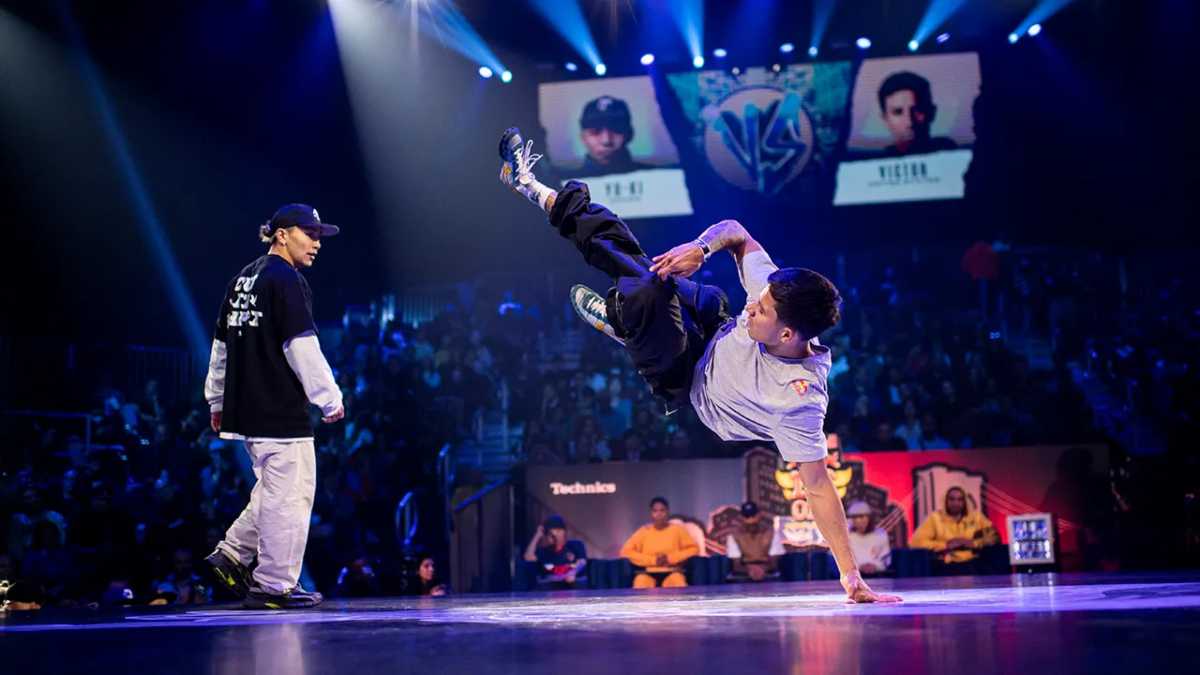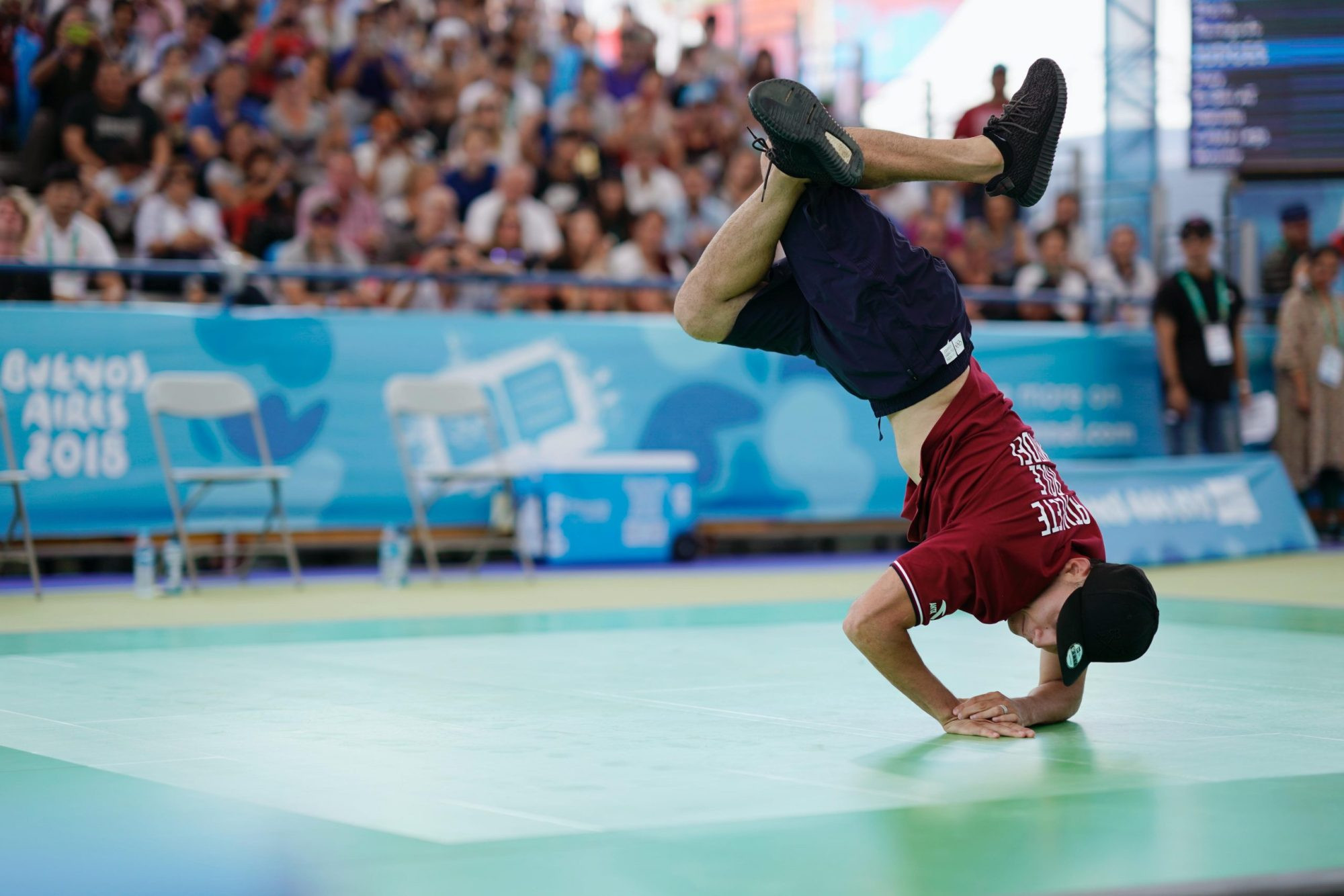Historical Context of Breaking at the Olympics

Breaking, a dynamic and expressive dance form with roots in the Bronx, New York City, has journeyed from the streets to the global stage, culminating in its inclusion as an Olympic sport. This journey, spanning decades, is a testament to breaking’s cultural impact and its evolution as a competitive discipline.
Origins and Evolution of Breaking, Breaking at the summer olympics
Breaking, often referred to as breakdancing, emerged in the 1970s as a vibrant expression of urban youth culture. It found its genesis in the Bronx, a melting pot of diverse communities, where young people improvised and experimented with movement, drawing inspiration from funk, soul, and jazz music. The early years of breaking were marked by freestyle battles, where dancers challenged each other in spontaneous improvisational duels. These battles, often held in parks and community centers, became the breeding ground for breaking’s unique style, characterized by intricate footwork, acrobatic spins, and dynamic power moves. As breaking gained popularity, it transcended its street origins and entered the realm of organized competitions, fostering a sense of community and pushing the boundaries of the art form.
Key Milestones in Breaking’s Olympic Journey
The journey of breaking towards Olympic recognition was marked by several pivotal moments:
- 1980s: Breaking gains mainstream recognition with the release of films like “Beat Street” and “Flashdance,” showcasing its vibrant energy and athleticism. The rise of breakdancing crews and competitions further fueled its popularity.
- 1990s: The emergence of international breaking events, such as the Battle of the Year, solidified breaking as a global phenomenon. These competitions attracted talented dancers from around the world, fostering a competitive spirit and showcasing the diversity of breaking styles.
- 2000s: Breaking continues to evolve, with the development of new moves and techniques, pushing the boundaries of athleticism and artistry. The emergence of breaking academies and schools further legitimized it as a legitimate sport.
- 2010s: Breaking’s journey towards Olympic recognition gains momentum with the formation of the World Breaking Organization (WBO) in 2017. The WBO establishes a unified set of rules and regulations for breaking competitions, paving the way for its inclusion in the Olympics.
- 2020s: Breaking is officially included in the program for the 2024 Paris Olympics, marking a historic moment for the art form and its global community.
Impact of Breaking’s Inclusion on the Olympics
Breaking’s inclusion in the Olympics has the potential to revolutionize the Games in several ways:
- Attracting a Younger Audience: Breaking’s youthful energy and dynamic style are likely to attract a younger generation of viewers, expanding the reach and appeal of the Olympics.
- Promoting Diversity and Inclusivity: Breaking, with its origins in street culture, embodies diversity and inclusivity. Its inclusion in the Olympics sends a powerful message about the value of different cultures and backgrounds.
- Elevating the Status of Breaking: The Olympic stage provides a platform for breaking to gain global recognition and legitimacy, fostering its development as a professional sport.
- Inspiring Future Generations: Breaking’s inclusion in the Olympics serves as an inspiration to young people around the world, encouraging them to pursue their passions and embrace the power of creativity and expression.
Breaking at the 2024 Paris Olympics

The inclusion of breaking in the 2024 Paris Olympics marks a significant milestone for this dynamic and expressive dance form. Breaking, with its roots in the streets, has evolved into a globally recognized sport, and its presence in the Games will undoubtedly elevate its profile and inspire a new generation of breakers.
Breaking Competition Format
The breaking competition at the 2024 Paris Olympics will feature a unique format that combines elements of both individual and team performance. The competition will be divided into two categories: men’s and women’s, with a total of 32 breakers (16 men and 16 women) competing for the coveted Olympic medals.
The competition will unfold in a series of rounds, culminating in the final showdown. Each round will consist of a series of battles, where two breakers go head-to-head, showcasing their skills and creativity. The judging panel will assess the breakers based on a variety of criteria, including technique, musicality, originality, and stage presence.
Selection Process and Qualification Criteria
The selection process for the breaking competition at the 2024 Paris Olympics will involve a series of qualification events held throughout the world. Breakers will have the opportunity to earn points towards Olympic qualification through participation in these events.
The qualification process will be governed by a points system, with the top-ranked breakers in both the men’s and women’s categories securing their place in the Olympic Games. The selection criteria will prioritize athletes who demonstrate exceptional skill, athleticism, and creativity, ensuring that the best breakers in the world will be competing in Paris.
Key Factors Determining Success in Breaking
Several key factors will play a crucial role in determining success in the breaking competition at the 2024 Paris Olympics. These factors include:
- Technical Proficiency: Breakers need to possess a strong foundation in the fundamental techniques of breaking, including footwork, power moves, and freezes. Mastering these techniques allows breakers to execute complex and innovative moves with precision and control.
- Musicality and Creativity: The ability to interpret music and express oneself creatively through movement is essential for success in breaking. Breakers must be able to connect with the rhythm and vibe of the music, using their movements to tell a story or evoke a particular emotion.
- Stage Presence and Showmanship: Breaking is not just about technical skills; it’s also about captivating the audience with one’s stage presence. Breakers need to be able to command the stage, exude confidence, and connect with the crowd through their performance.
- Mental Toughness and Adaptability: Breaking competitions are high-pressure environments, and the ability to stay calm and focused under pressure is crucial. Breakers must also be adaptable, able to adjust their strategies and tactics based on the challenges presented by their opponents.
Impact of Breaking on the Olympic Movement: Breaking At The Summer Olympics

Breaking’s inclusion in the Olympic Games is not just a recognition of its athleticism and artistry, but also a testament to its potential to inspire a new generation of athletes and fans. Breaking’s dynamic, expressive, and accessible nature makes it uniquely positioned to broaden the appeal of the Olympic movement.
Breaking’s Appeal and Accessibility
Breaking’s appeal lies in its ability to connect with audiences on multiple levels. It’s a sport that combines athleticism, artistry, and storytelling, making it both physically demanding and aesthetically captivating. Unlike many traditional Olympic sports, breaking doesn’t require expensive equipment or specialized facilities. A simple space and a good beat are all that’s needed to start breaking, making it highly accessible to individuals from diverse backgrounds and socioeconomic levels. This accessibility fosters inclusivity and encourages participation, making it a sport for everyone.
Comparison with Other Olympic Sports
Breaking’s unique blend of athleticism, artistry, and cultural significance sets it apart from other Olympic sports.
| Characteristic | Breaking | Other Olympic Sports |
|---|---|---|
| Origin and History | Originated in the Bronx, New York, in the 1970s as a form of street dance, evolving through various subgenres. | Historically rooted in specific geographical regions and social contexts, often with a longer established history. |
| Skillset and Technique | Combines power, agility, flexibility, and creativity, with emphasis on improvisation and self-expression. | Typically focused on specific physical skills and techniques, often emphasizing precision and technical mastery. |
| Competitive Format | Battles between two dancers judged on a combination of technical skill, creativity, and musicality. | Typically structured around individual or team competitions, often with standardized rules and scoring systems. |
| Cultural Impact | Deeply rooted in urban culture, with a strong emphasis on individuality, self-expression, and community. | Varying levels of cultural influence, ranging from traditional sports with deep historical roots to more modern sports with a broader appeal. |
Breaking at the summer olympics – Breaking records at the Summer Olympics is a testament to the dedication and hard work of athletes, but it’s also a reflection of the evolving landscape of sports. Just as the world of athletics continues to evolve, so too has the world of frozen treats, with innovations like Wendy’s Frosty leaving their own mark on history.
Similarly, the pursuit of Olympic glory is fueled by a constant desire to push boundaries, just as the Frosty has become a classic, embodying the spirit of innovation and indulgence.
Breaking records at the Summer Olympics is a testament to human athletic potential. It’s a feat that requires years of dedication, rigorous training, and a touch of something extra, much like the artistic spirit of Victor Montalvo , whose work transcends boundaries.
These moments of triumph, whether in the arena or the studio, are ultimately about pushing limits and inspiring the world.